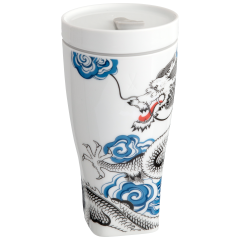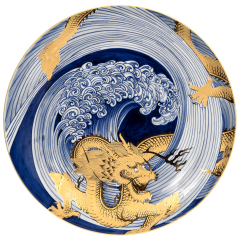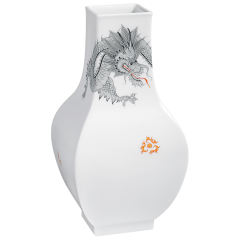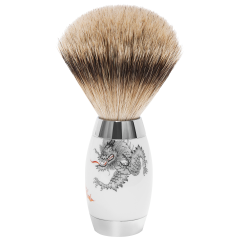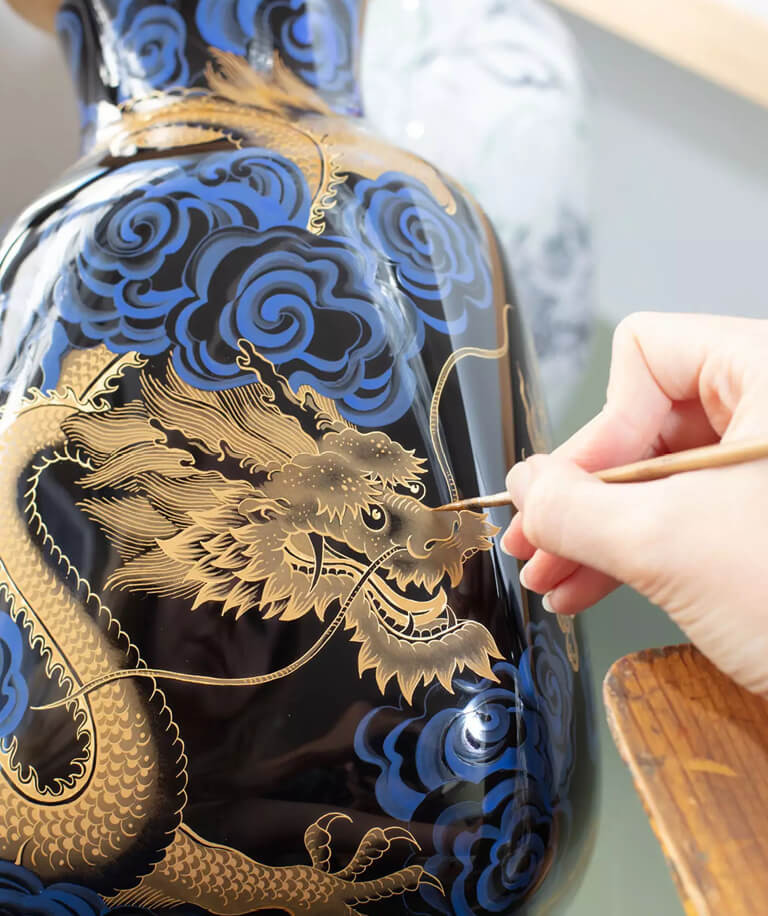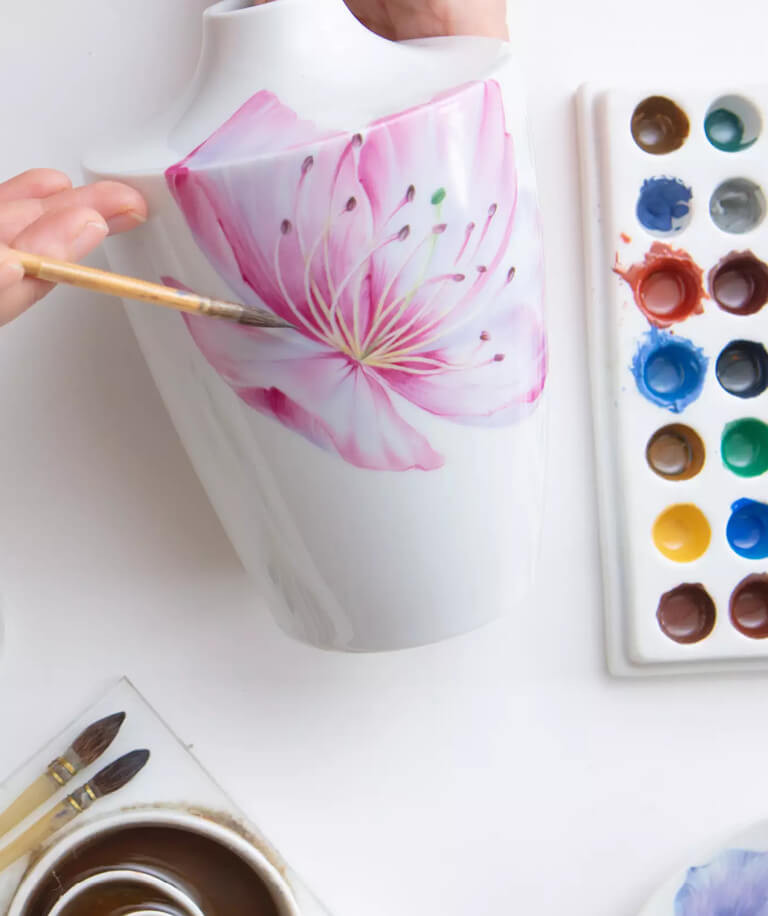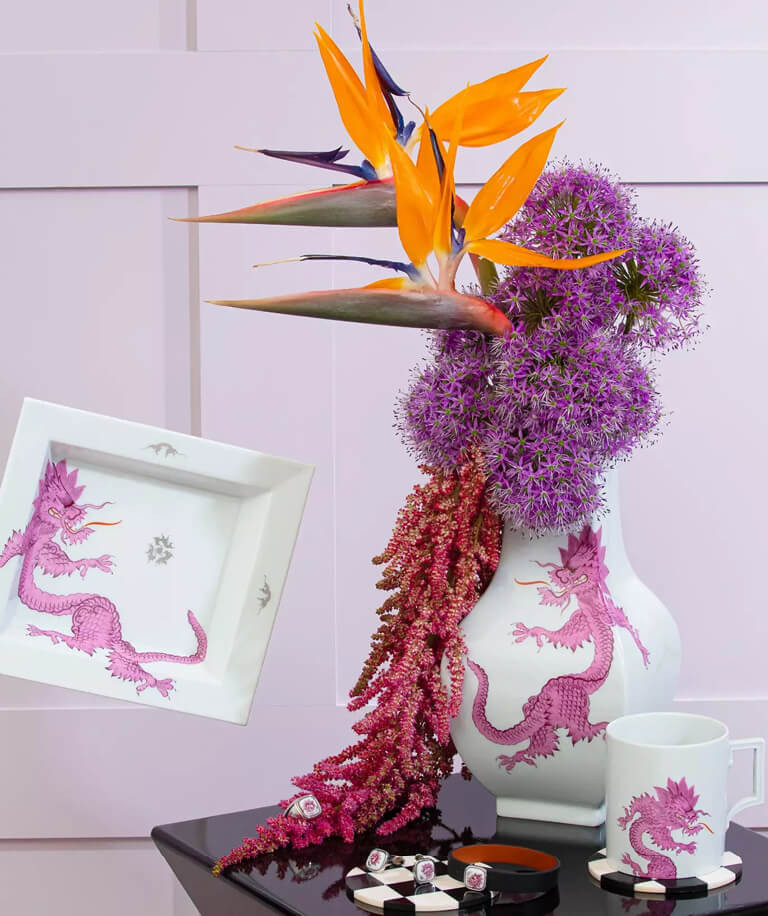Christmas Offer from MEISSEN – Enjoy Exclusive Savings! Learn More.
Skip to Content
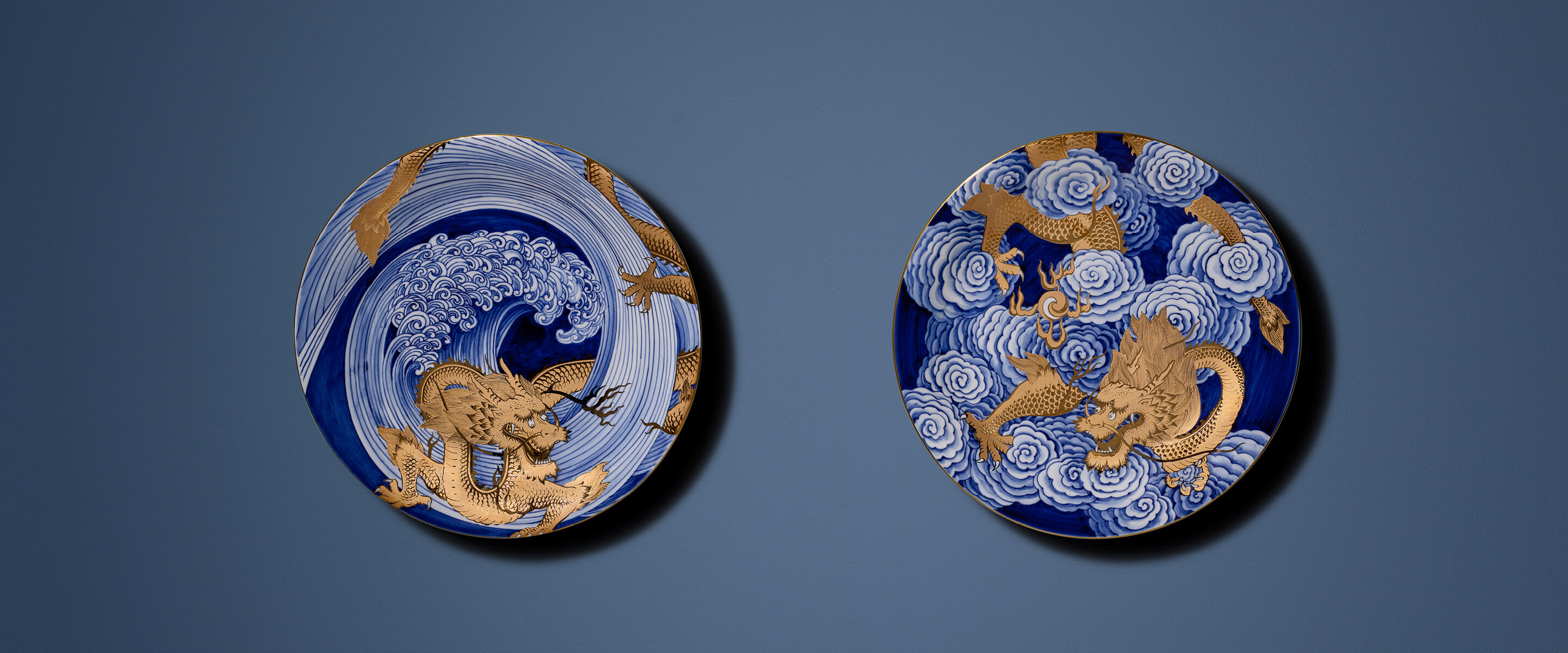
The dragons of MEISSEN
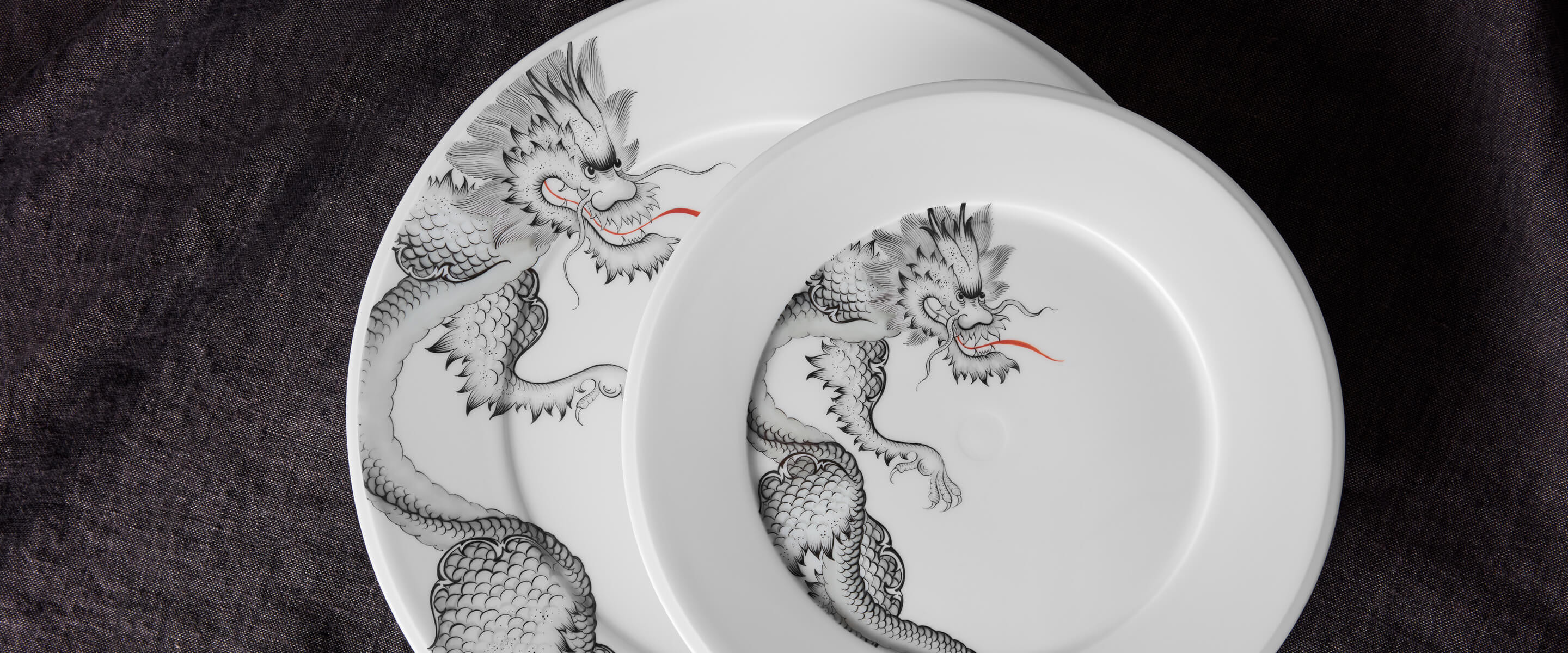

The dragons of MEISSEN
#fabulouspatterns
-
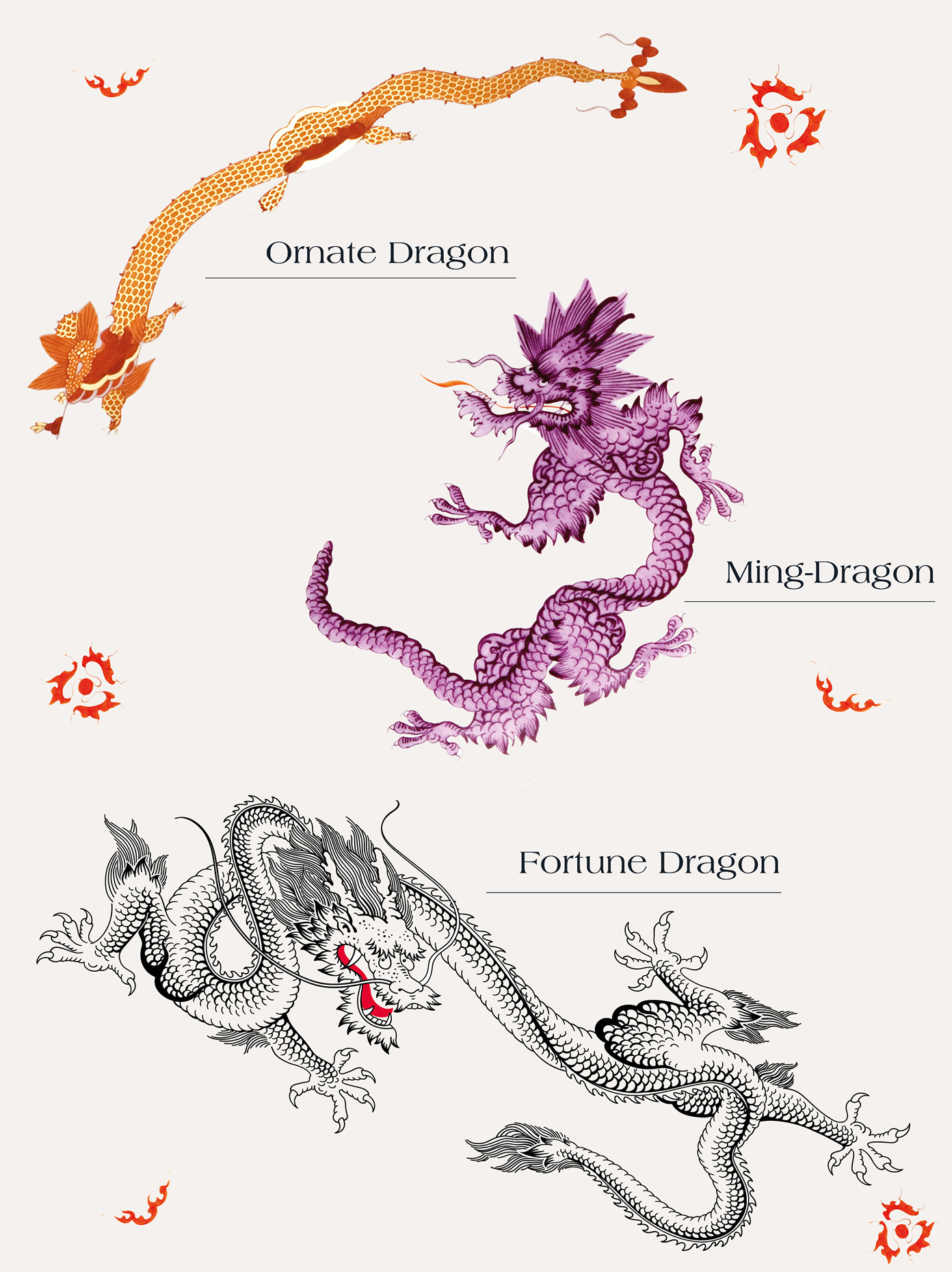 Worldwide dragon mythology is rich and fascinating. Dragons are seen as divine, wise beings in many cultures and generally symbolize luck, power and prosperity. While dragons were originally seen as monsters in Western mythology and associated with chaos, in East Asia they are seen as positive beings. Chinese dragons, which represent imperial power, have snake-like bodies, scale-covered skin and often five claws. Japanese dragons, ryu, are celestial creatures associated with water and often have serpent-like forms, horns and beard-like protrusions. Asian dragon mythology combines spirituality, closeness to nature and protection, and these mystical creatures remain important cultural symbols that influence art, literature and festivals throughout the region.
Worldwide dragon mythology is rich and fascinating. Dragons are seen as divine, wise beings in many cultures and generally symbolize luck, power and prosperity. While dragons were originally seen as monsters in Western mythology and associated with chaos, in East Asia they are seen as positive beings. Chinese dragons, which represent imperial power, have snake-like bodies, scale-covered skin and often five claws. Japanese dragons, ryu, are celestial creatures associated with water and often have serpent-like forms, horns and beard-like protrusions. Asian dragon mythology combines spirituality, closeness to nature and protection, and these mystical creatures remain important cultural symbols that influence art, literature and festivals throughout the region.
The history of MEISSEN is closely linked to Asian culture. As the first porcelain manufactory in Europe, we have been strongly influenced and inspired by designs and techniques from the region where porcelain originated. Elector of Saxony and founder of the manufactory, Augustus the Strong, was a passionate porcelain lover and collector. He had numerous magnificent pieces shipped to him from Asia. He made many of these pieces temporarily available to the manufactory's artists so that they could familiarize themselves with the design and porcelain painting and incorporate it into their work. This is how the "Oriental" Painting were once created, the name of which can be traced back to the "Dutch East India Company", which transported the valuable pieces to the Elector's homeland.
The "Red Dragon", known today as the "Red Court Dragon" or "Ornate Dragon", was one of the early Oriental Paintings around 1730. The inspiration was found in Japanese porcelain, enriched with numerous symbols of East Asian culture and initially applied to tableware. While the first version with the iron-red dragon and golden details was intended exclusively for the Saxon court, different colored versions of the decoration in black, blue, yellow, green, purple and violet were also produced for the public from 1858 onwards. It was only with the shifts in political power around 1918 that this exclusivity was completely lifted and the decoration was made available to all lovers of Meissen craftsmanship in the iconic red.
"If the sky could dream, it would dream of dragons."
Ilona Andrews
Ilona Andrews
-
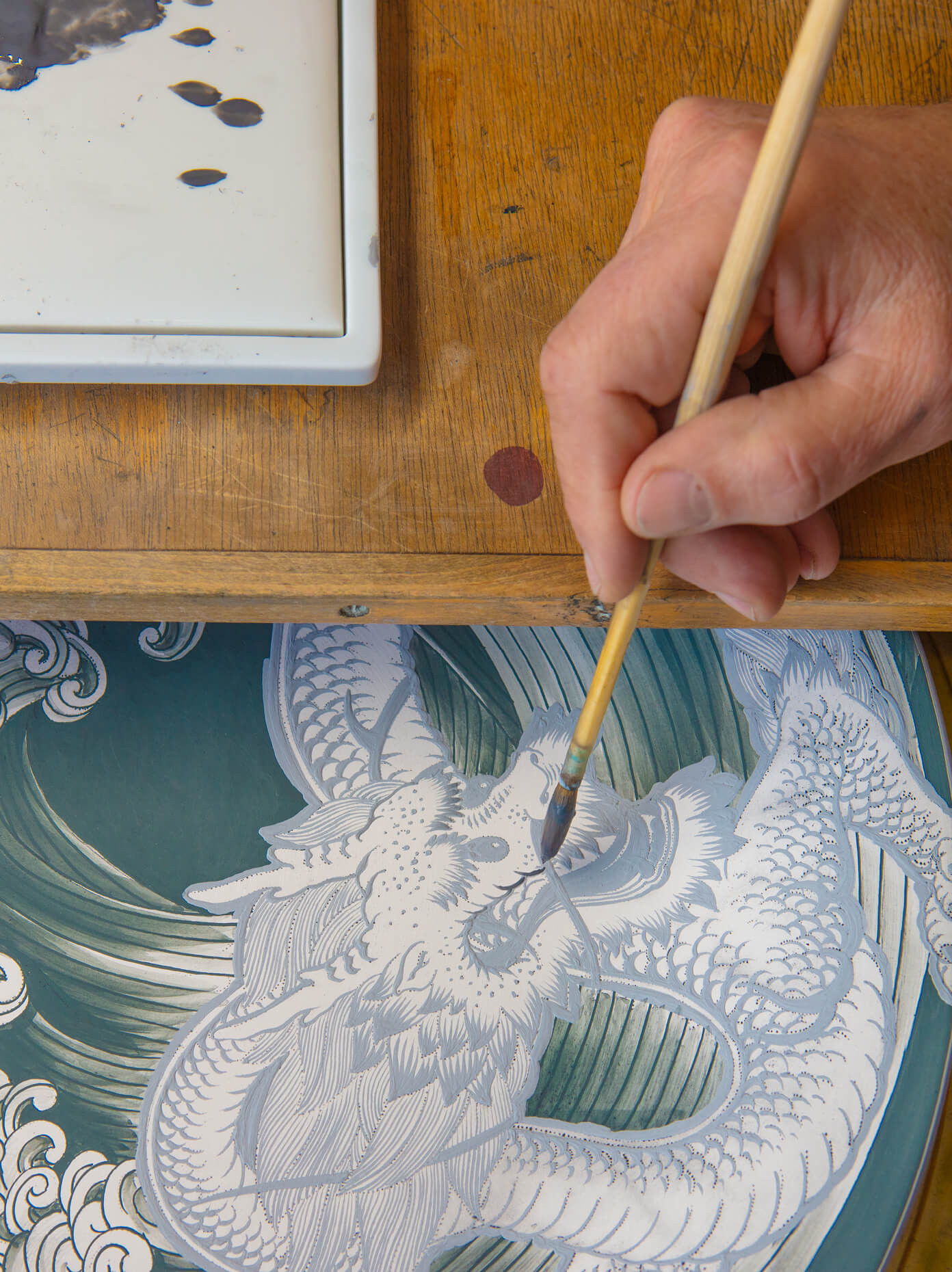 Around the beginning of the 20th century, another dragon found its way onto Meissen porcelain. The "Ming Dragon" was to become one of the most famous designs in the history of MEISSEN. Its creation was also inspired by Asian culture, but this time it was primarily based on Chinese mythology.
Around the beginning of the 20th century, another dragon found its way onto Meissen porcelain. The "Ming Dragon" was to become one of the most famous designs in the history of MEISSEN. Its creation was also inspired by Asian culture, but this time it was primarily based on Chinese mythology.
In contrast to the Ornate Dragon, there were no concrete models to guide the development of the Ming Dragon pattern. Instead, they had to rely on lore without knowing the deep symbolism behind the small details. To remedy this and honor the culture behind the dragon, our product designer Zhuoyu Hou, whose roots can be traced back to a small village in southern China, dedicated herself to designing a real (imperial) dragon. This is how the new "Fortune Dragon" was created in 2022, which differs considerably from its predecessor - for example, with a tongue that does not stick out, a tail end with hair and, above all, limbs with five claws.
We are proud of our three unique dragons and our incomparable history. So we look to the future with anticipation, ready to continue creating innovative works that bridge the gap between cultures. May these dragons not only be enthroned on our porcelain works of art, but also serve as powerful symbols of the cultural diversity and artistic heritage that MEISSEN proudly carries forward. Every detail, every curve and every claw reflects the passion for art that has driven us for over three centuries.







